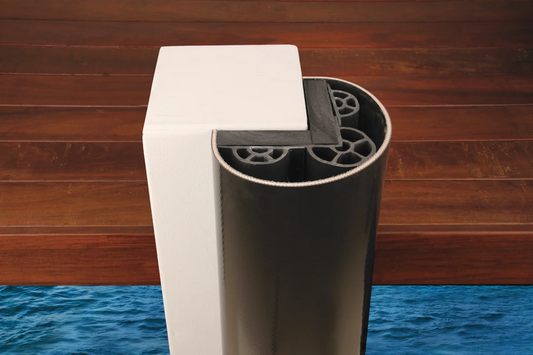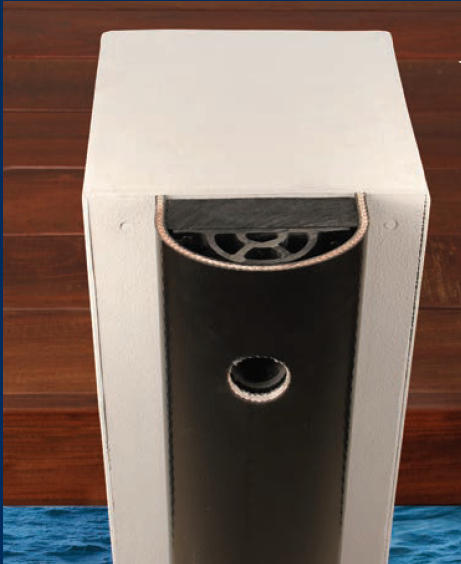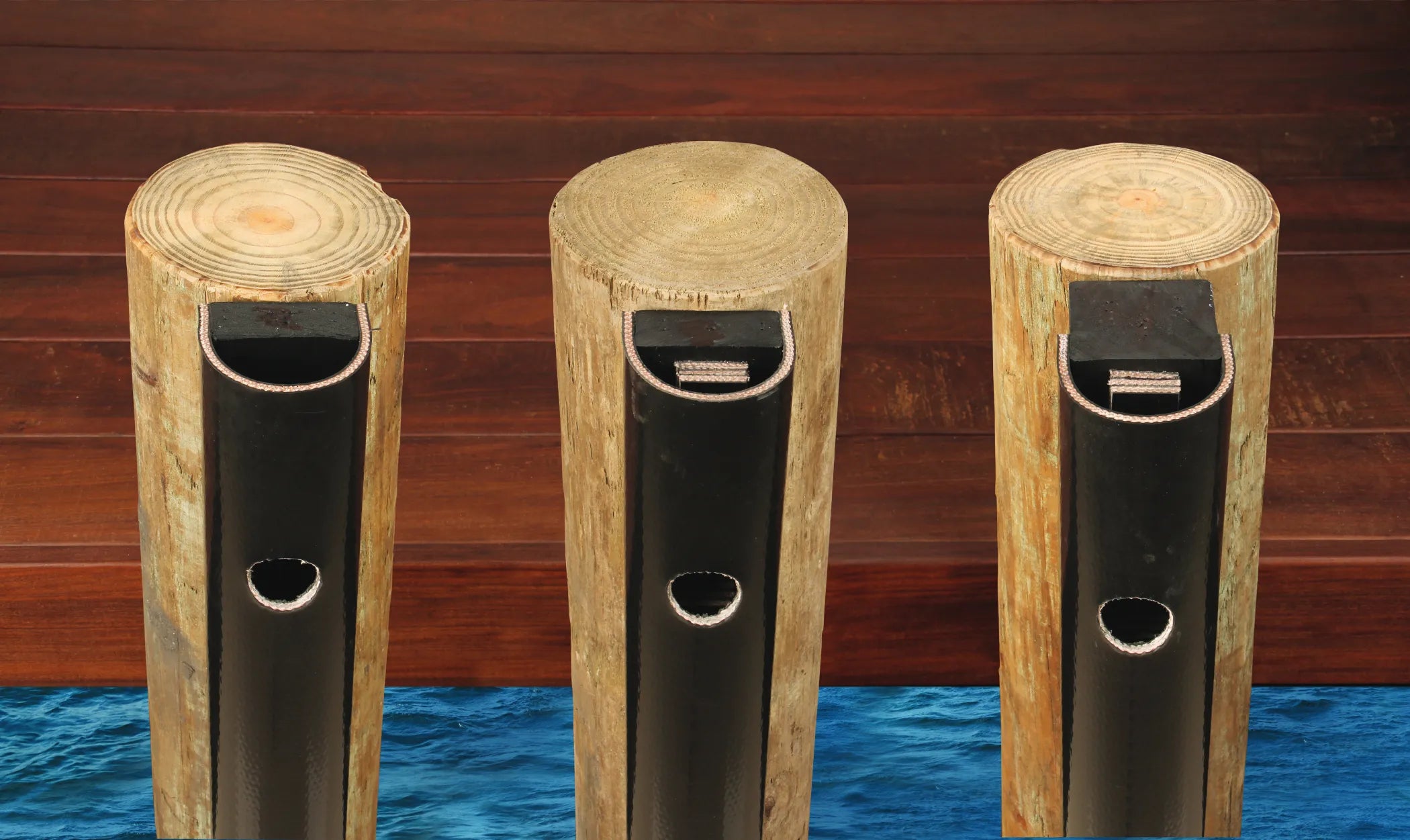
FEND-OFF
Your boat is a valuable asset that you want to protect. Using the right fending material gives you peace of mind knowing your vessel won’t suffer bruises, cracks, or damage from unexpected impact. Choose the right dock fender today and keep your boat safe and secure.
-
Molded Universal Dock Corner Bumpers
Regular price Starting at $33.00 - $35.00Regular priceUnit price / per- Available in 6"x6" and 10"x10"
- Tough, non-yellowing, marine-grade vinyl
- Compatible with most dock bumpers
-
FEND-OFF® Dock Fenders
Regular price Starting at $156.00 - $456.00Regular priceUnit price / per- Flexible PVC outer shell with spun polyester fiber
- Effective barrier between hulls and hard surfaces like docks and seawalls
- Available in 6’, 8’, 10’, and 12’ standard lengths
-
FEND-OFF® Heavy Duty Corner Fender
Regular price Call For PricingRegular priceUnit price / perCall For PricingSale price Call For Pricing- Available in 2', 4', 6', 8' lengths
- Engineered specifically for concrete corners
- Mounts horizontally or vertically
- Designed for vessels up to 150’ in length
-
FEND-OFF® Concrete Pile Fender
Regular price Starting at $263.00 - $526.00Regular priceUnit price / per- Available in various lengths
- Extra heavy duty
- Designed for vessels up to 150’ in length
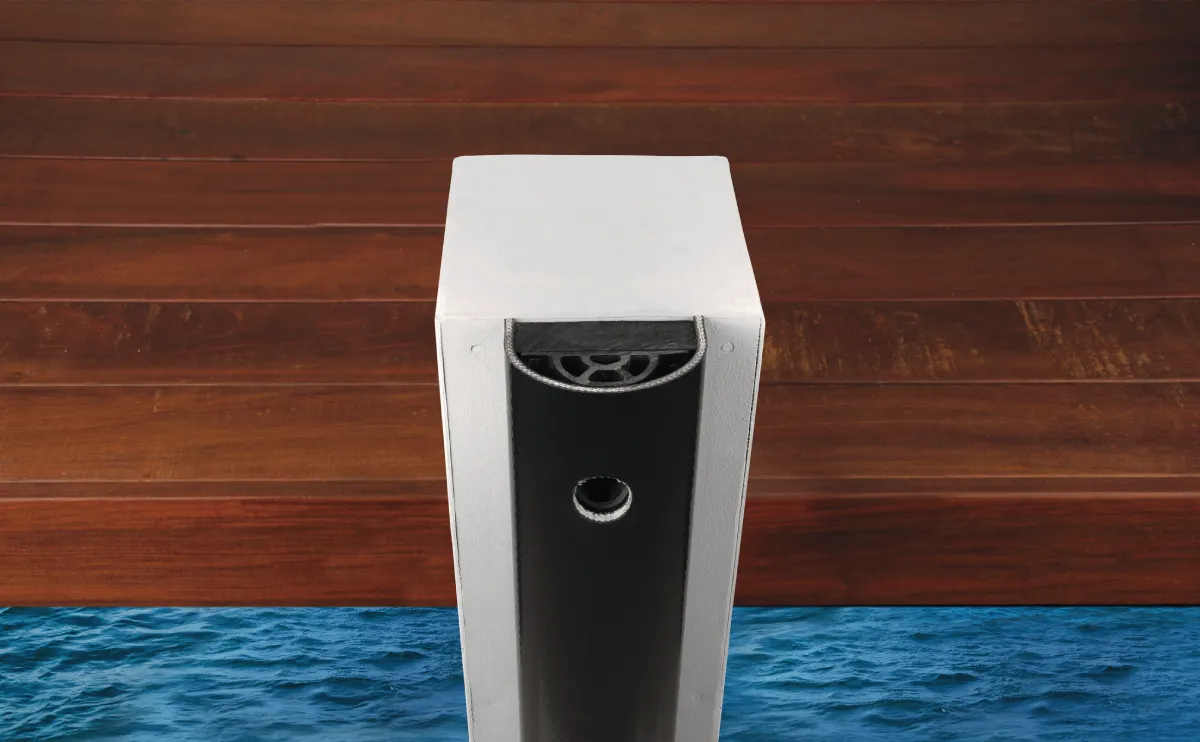
PROTECT YOUR BOAT VESSELS
Every boat owner wants to protect their vessel from potential damage while resting at the dock. If the boat isn’t fixed on the dock lines and properly cushioned, motion due to winds could easily cause damage to the delicate parts of the boat.
To avoid damage, fix your boat to the fender line and place a protective cushion around the boat, the dock, or both to guard against direct contact, friction, or collision with other boats and dock parts. You’ll need to tie a rope to the fender line and then tie the fender line to the boat. Fenders can be tied both to the vessel and the dock.
TYPES OF FEND-OFF® DOCK FENDERS
Every boat owner wants to protect their vessel from potential damage while resting at the dock. If the boat isn’t fixed on the dock lines and properly cushioned, motion due to winds could easily cause damage to the delicate parts of the boat. To avoid damage to your boat, you want to fix your boat to the fender line and place a protective cushion around the boat, the dock, or both to guard against direct contact, friction, or collision with other boats and dock parts. You’ll need to tie a rope to the fender line and then tie the fender line to the boat. Fenders can be tied both to the vessel and the dock.
CONCRETE PILE / EXTRA HEAVY DUTY DOCK FENDERS (CP)
Our concrete pile fenders are meant for vessels up to 150 feet in length. They have outer shells made of flexible PVC, having spun polyester fiber attached to recycled plastic lumber. The fenders are specially designed to provide a protective barrier between the hulls of boats and yachts and hard surfaces such as docks, seawalls, and pilings.
Because of these unique qualities, concrete pile dock fenders provide maximum protection for a vessel’s hull and can withstand the harsh marine environment. They are often available in black and lengths from 2 feet to 10 feet.
CONCRETE CORNER DOCK FENDER
The corner dock fender designed for concrete corners is mounted 90 degrees horizontally or vertically. It finds application in the most dangerous areas of the harbor, such as the corners of canal entrances, corners of dock heads, quays, and slipway entrances. The mounting holes are placed in such a way as to protect the corner of the concrete from cracking. Concrete corner dock fenders are popular in the market and are often available in lengths from 2 feet to 10 feet.
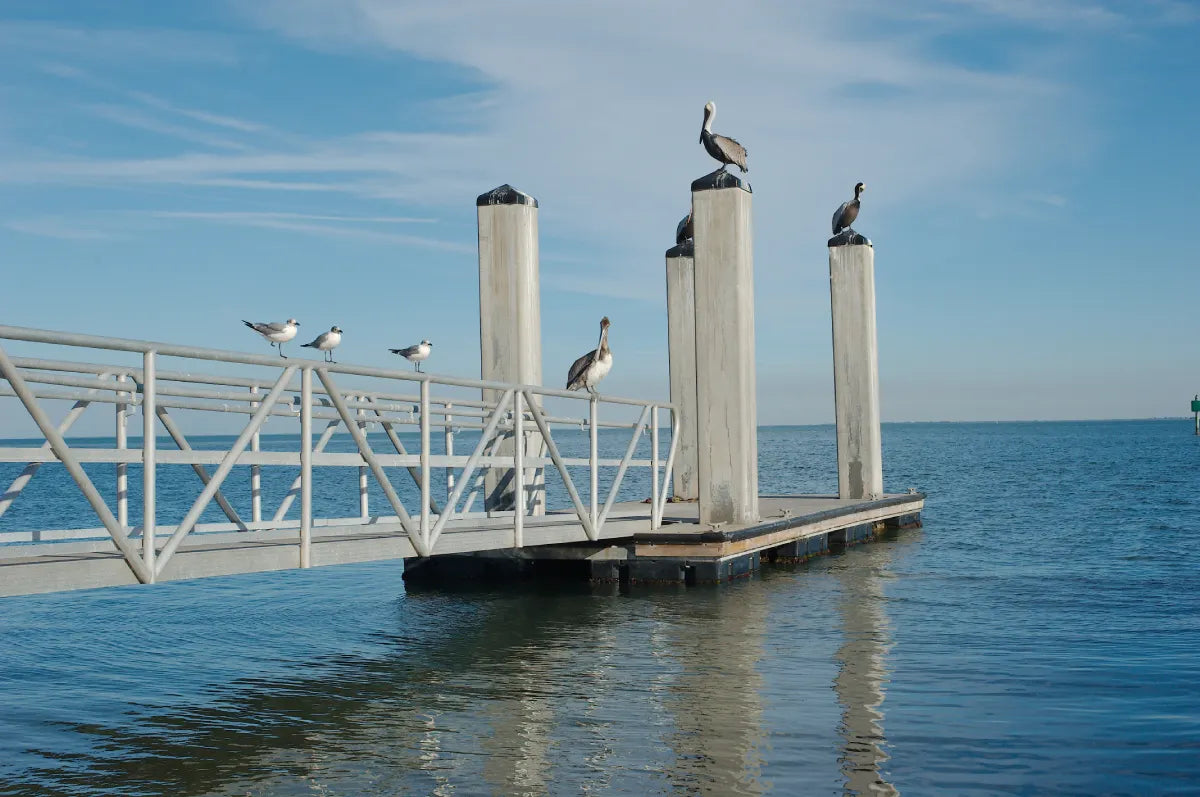
FAQs
WHAT IS A DOCK FENDER?
Dock Fenders act as a buffer zone between your vessel and other objects while your boat is docked, rafted, or anchored. They protect your boat from the shock that would’ve otherwise come into contact with your vessel and perhaps damage it. Dock fenders also help guide your boat into its slip. They are available in standard lengths of 6, 8, 10, and 12 feet, but custom fenders are also available on request.
HOW DO YOU SECURE FENDERS ON A DOCK?
First, you need to know the design of your boat and the type of dock you are using. Secondly, identify the critical areas of the dock where you’ll use the fenders. Pilings, for instance, add complication to docking, and you need to have fenders around this installation.
When securing fenders on a dock, you may need to use different knots and ropes depending on the dock configuration and available space. It’s recommended to use the standard, secure knots often used for mooring boats and hauling and hoisting objects. Your best options fall in line with the most common marine knots: the clove hitch, the running hitch, and the mooring hitch.
CAN I TIE FENDERS TO A DOCK?
Yes. You can use fenders as bumpers to cushion the dock and protect your boat from bruising/damage. The fenders you choose should protect the boat’s delicate parts, such as fiberglass and gel coat, while anchored, docked, or rafted.
When tied to the dock, the efficiency of the bumper/fender depends on a couple of factors. These include the type of dock used and how the dock is used. The style/design of the boat in question also plays a crucial role. A pleasure boat dock, for instance, constructed with vertical support posts/pilings underneath it, or a floating dock with no pilings could benefit from cushioned edges around its perimeter.
If, on the other hand, the pilings are exposed, you will need to use some protective cushions on the side of the dock and piling fenders on the piling. Bumpers could be anything from old tires to high-end, molded composite materials designed specifically for the dock.
WHAT IS A CORNER DOCK FENDER
Corner dock fenders refer to the cushions that protect a boat from damage caused by rubbing/impacting a dock (i.e., when the boat is tied up) or by contact with another boat (when two or more boats are rafted/tied together). Ideally, there are two types of dock fenders: inflatable and non-inflatable.
Inflatable dock fenders consist of an airbag surrounded by a vinyl shell that’s soft to the touch and available in varying spherical or cylindrical shapes, sizes, and colors. You can make the inflatable dock fender as soft or as hard as necessary by simply decreasing/increasing the air pressure inside the fender.
On the other hand, non-inflatable dock fenders are made from molded plastic or closed-cell foam. They are available in odd shapes and sizes, often for applications where spherical or cylindrical dock fenders won’t work. For example, on the sides of low-slung bass boats or squared corners of pontoon boats.
Most non-inflatable fenders are compression-molded, sometimes with steel inserts. An example is the concrete dock fender, a 90º horizontally or vertically mounted fender designed and engineered specifically for concrete corners. In other cases, the rubber in steel can be replaced with PU to reduce friction and increase visibility. Whether the fender is inflated, non-inflated, soft foam, cylindrical or flat, they all work to absorb the shock of boats bumping into docks (dock fenders) or other boats (boat fenders).
Boats tied to floating docks usually set fenders just above the waterline to maintain a buffer zone between the dock and the boat, while vessels that raft together place the fenders at the point of contact.



